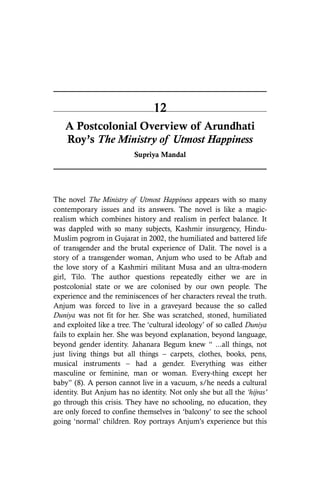Arundhati Roy's novel 'The Ministry of Utmost Happiness' explores contemporary issues such as the Kashmiri insurgency, communal violence, and the struggles of the transgender and Dalit communities in India. Through the stories of characters like Anjum, a transgender woman, and Saddam Hussain, a Dalit man, the narrative critiques the systemic oppression and political hypocrisy in postcolonial India, questioning the reality of democracy and equality. The novel uses magic realism to intertwine personal and political narratives, exposing the vulnerabilities and injustices faced by marginalized groups in a divided society.












